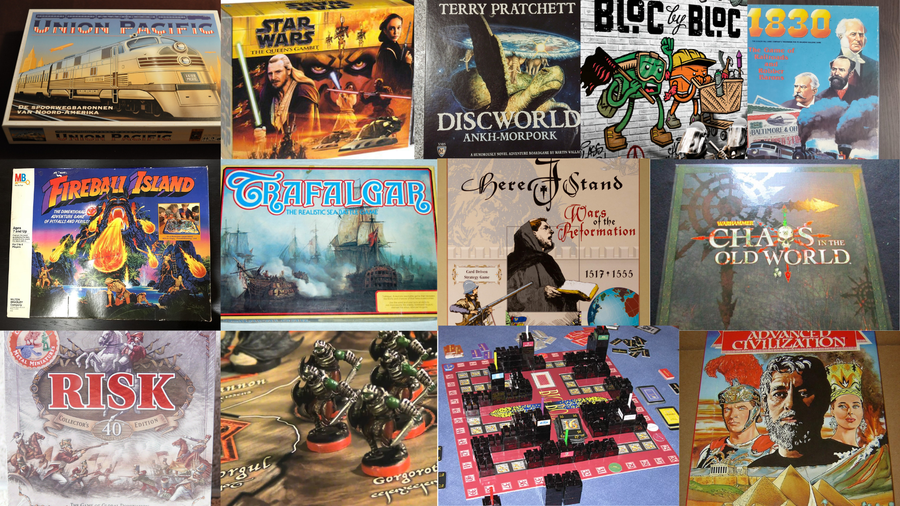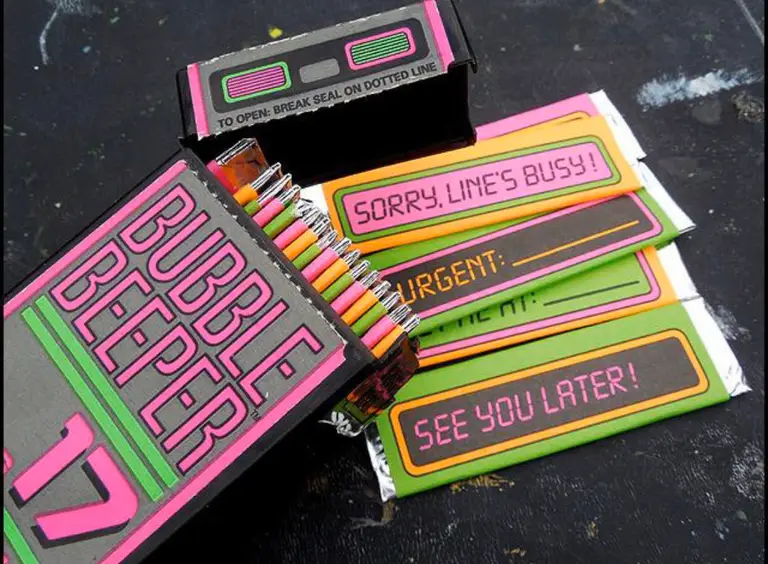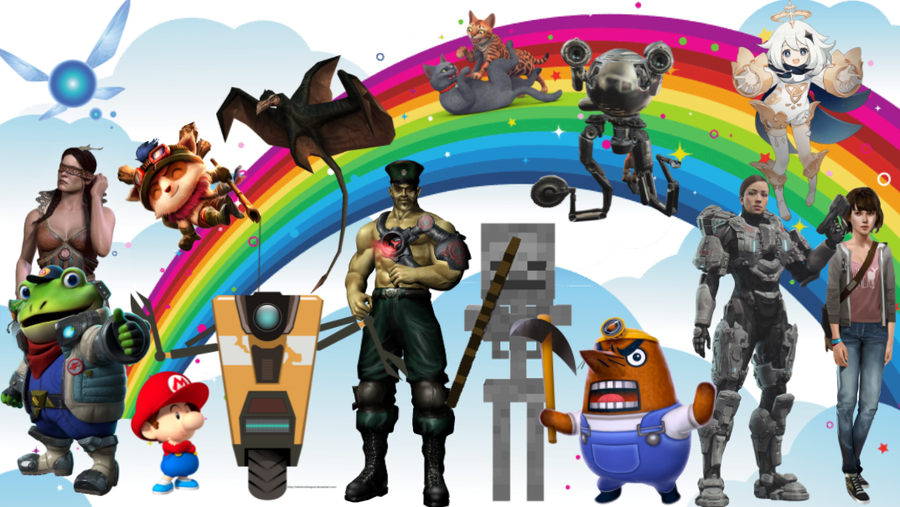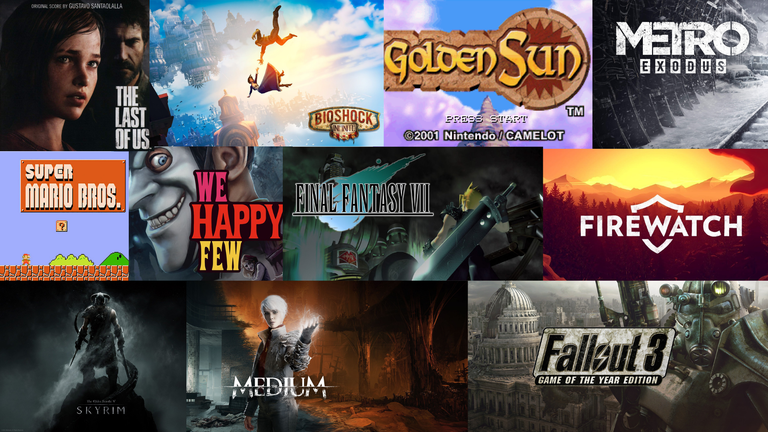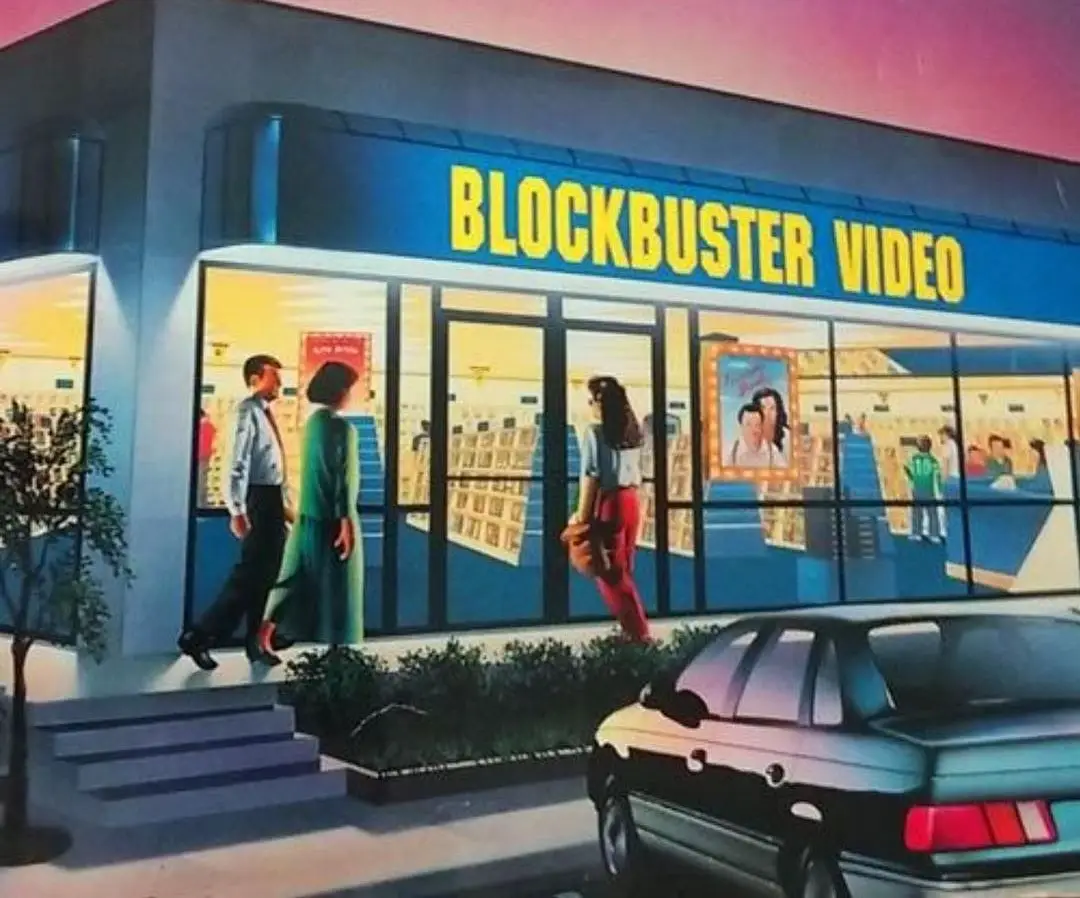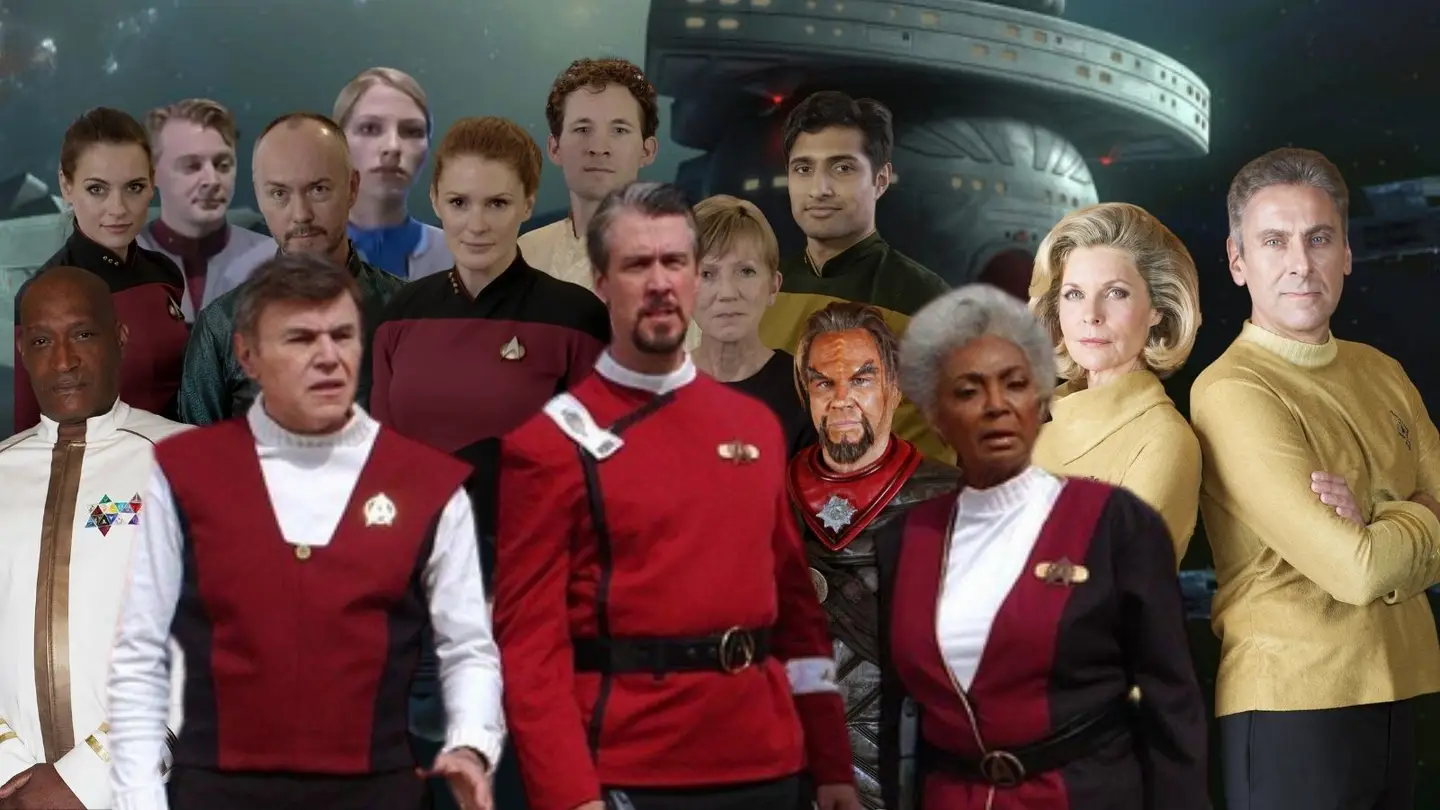Slow Media Modern Waldorf & Montessori Kids Can Watch!
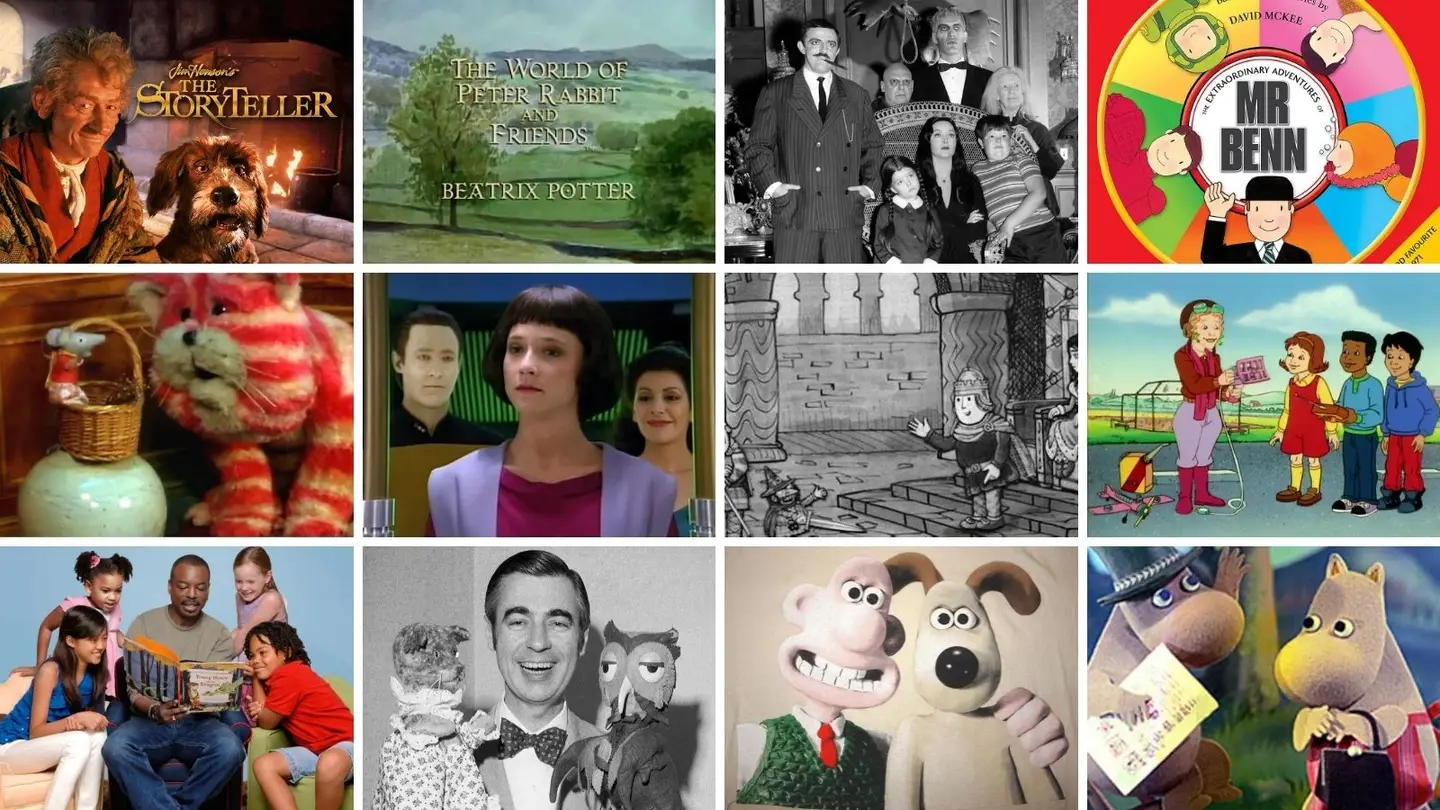
Share
Interests
Posted in these interests:




Figuring out what constitutes “slow media” for Waldorf-inspired education is not easy. But media that Waldorf kids can watch does exist! However, the criteria for what media is acceptable to expose kids to is so vastly different for media-conscious parents than the typical age recommendations. Common Sense Media, for instance, offers age recommendations for kids, but it sometimes disregards important factors in a piece of media, like subtextual themes, subtle violence, and irreverence for human life and dignity. This is a problem that so many media recommendation aggregators for parents have. They provide recommendations that are too generic to be of any good.
I was homeschooled by media-conscious parents who, until I was ten, let only a few choice pieces of film and television into my life. But that was in the 1990s, and VHS cassettes were still top-dog technology! Now, it’s nearly impossible for parents to curtail their child’s media interaction—especially since many parents are so busy and stressed that being able to place the kid in front of a screen is one of the few ways for the basic tasks of life to get done. And that’s not even considering all those parents who have to work from home!
For kids, all media is educational: anything they’re exposed to will be something that helps them become who they will be—tomorrow, as well as later in life. Looked at this way, media for kids is all about finding the right balance between media that is engaging while also supporting skills in introspection, media literacy, and reverence for life. This is where a concentration on slow media, for younger kids especially, becomes so vital.
What are media-conscious parents supposed to do?
In 1994, the U.S. Department of Education’s Office of Educational Research and Improvement published guidelines that pointed out the importance of parental guidance for the media kids interacted with:
“Parental monitoring is a key factor, since the research studies show that increasing guidance from parents is at least as important as simply reducing media violence. Children may learn negative behavior patterns and values from many other experiences as well as TV programs, and parental guidance is needed to help children sort out these influences and develop the ability to make sound decisions on their own.”
And Renee Hobbs, expert in media literacy, made this point:
“Just because our students can use media and technology doesn’t mean they are effective at critically analyzing and evaluating the messages they receive. Students need a set of skills to ask important questions about what they watch, see, listen to and read. Often called media literacy, these skills include the ability to critically analyze media messages and the ability to use different kinds of communication technologies for self-expression and communication.”
However, just as media can have extremely detrimental effects on a child’s development, it can have positive effects as well! The key is ensuring that children are accessing only that sort of media that is appropriate to their development, will offer them tools for greater self-awareness and compassion, and will help imbue them with an advanced sense of reverence for the world around them. Reverence, especially, is a vital factor in understanding a modern approach to Waldorf-inspired education. With parental guidance, sound training in media literacy, and a deep concentration on the experience of compassion and reverence, it is possible to bring media into a child’s life in a wholesome and holistic way.
Criteria for inclusion
The most important thing to note about this list is that not all shows should be viewed in a vacuum. I’ve provided important details and a unique rating system to help parents explore this content and decide if it is appropriate for their kid. However, children don’t all develop at the same pace, and the experience and media that a child accesses elsewhere in their life may cause them to have unexpected experiences with any new media!
It’s vital that parents check in with their child and ask them questions that help the child enunciate their thoughts and feelings regarding the media they are exposed to. Likewise, parents should attempt to interact with their child’s media themselves whenever possible, and be present to discuss things with the child that the child may not understand.
Whatever you do, don’t assume that just because something is labeled as “good for kids” it actually is! So much of the content created for children, especially these days, features all manner of implicit violence, humor, social norms, and political subtext that kids simply aren’t able to parse on their own (and which will become part of their unconscious processing of the world). Likewise, the pace of so much media “for children” tends to be extremely hectic, reinforcing unfortunate attention issues as well as behavioral issues when that hectic pace is attached to scenes of action and, or, humor.
Luckily, some great options for kids do exist, and you can find them here!
1 – Mister Rogers’ Neighborhood (1962)
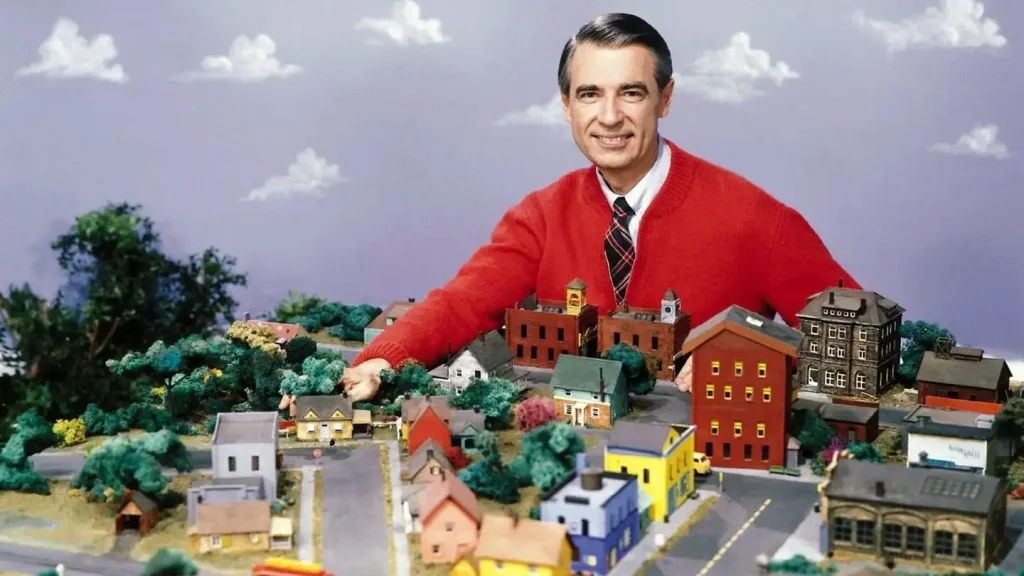
Mister Rogers’ Neighborhood changed so many lives over the course of its existence as one of the longest-running television series ever, and it still has the power to inform and inspire young viewers today.
Recommendation
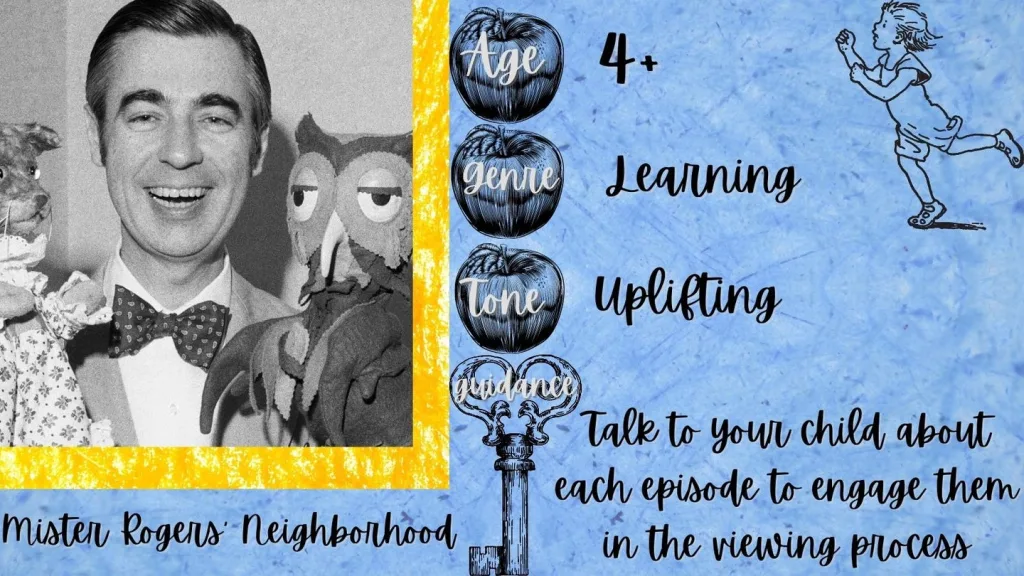
Fred Rogers believed that media needed to be slower, needed to engage with kids in a different way than all those other shows they had access to, and he provided the sort of content in his series that acted as a balm to some of the damage caused to children by the increasingly hyperactive and violent media directed their way.
Mister Rogers’ Neighborhood is available in full on DVD, and I suggest starting out with the very earliest episodes and working forward. That’s a lot of viewing time and a whole lot of wonderful information as well.
2 – Noggin the Nog (1959)
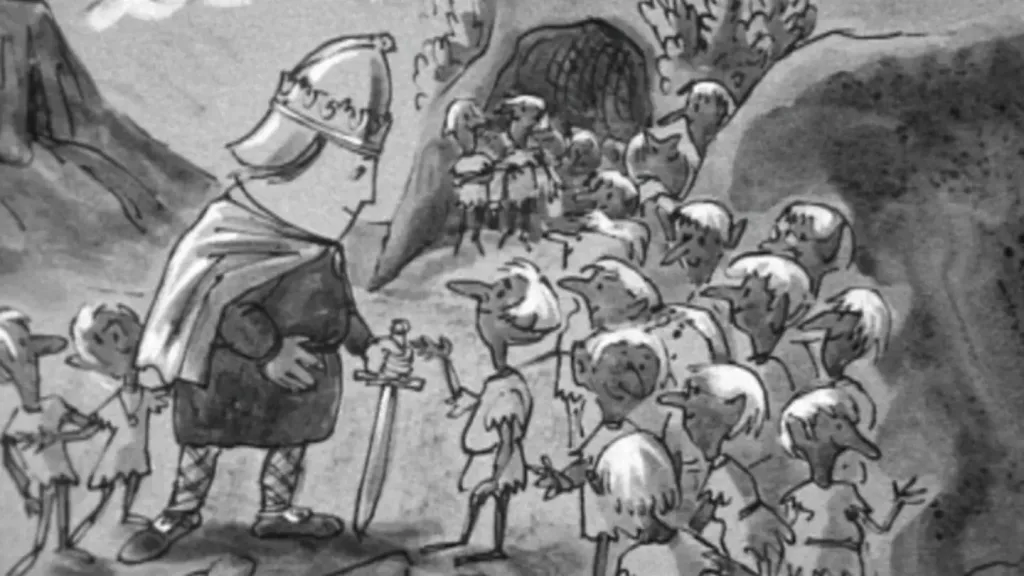
Noggin the Nog offers a delightful tale of the Viking King Nog of the land of Nog, a place filled with all manner of the fairy tale fantastic, from talking birds to dragons. The stories all concentrate on Nog’s adventures, usually opposed by the machinations of “Nogbad the Bad,” who wants to take Nog’s throne for himself.
Recommendation
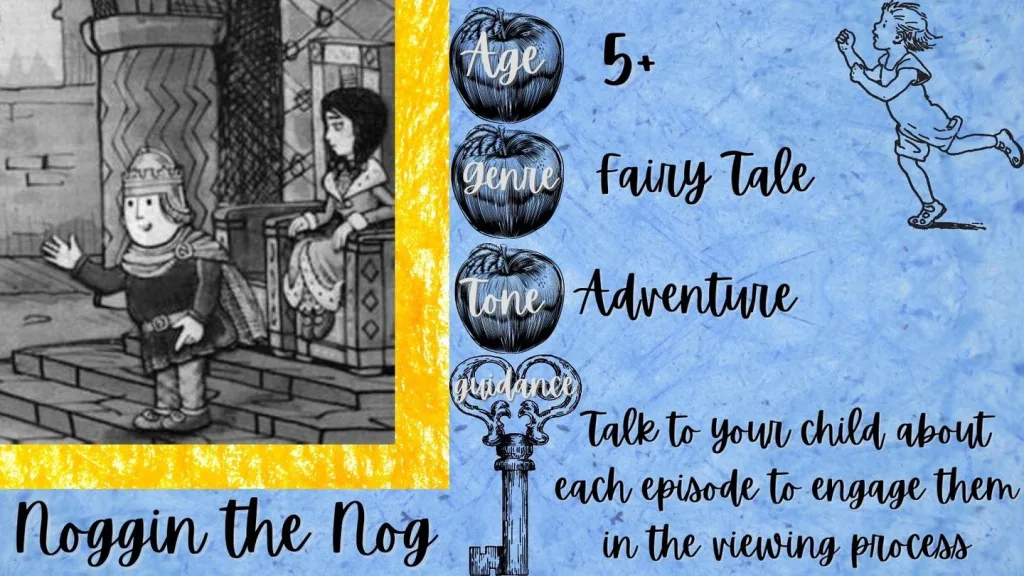
The story is told through stop-animation, with narration and simple voice-acting bringing the world and the characters to life. In this way, it’s more like experiencing an animated storybook than a modern animation.
3 – Mr. Benn (1971)
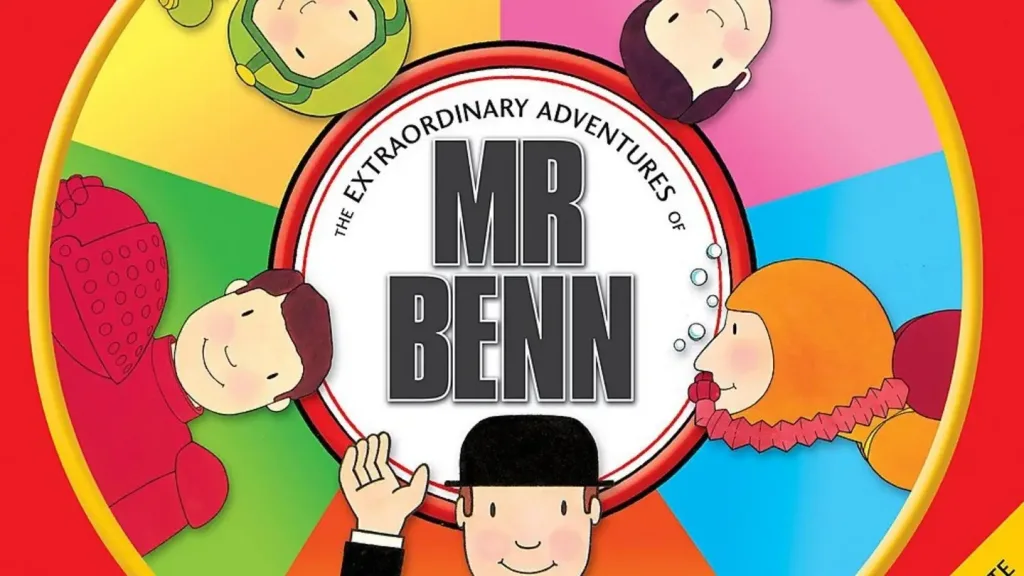
Mr. Benn is the story of a typical businessman who wears a suit and black bowler hat most of the time, but who also knows a wonderful secret: if he visits the costume shop and dons a costume, he can walk through the door at the rear of the shop and be transported into an infinite number of possible worlds on imagination.
Recommendation
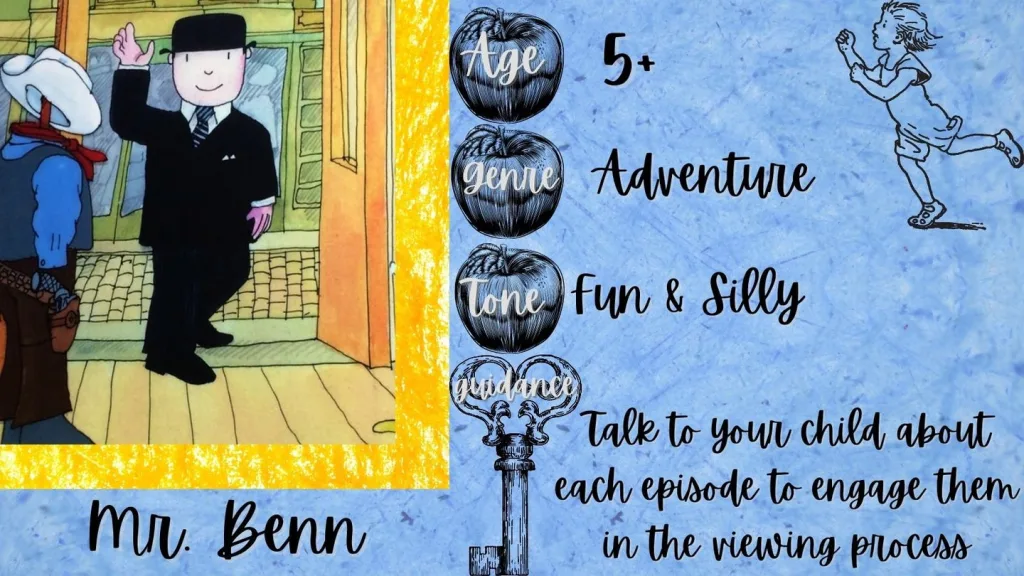
Mr. Benn works brilliantly for younger children for a number of reasons, not the least of which is due to the extremely simple animation style, which is little more than a moving picture-book with delightful narration. Kids won’t be caught up in a violent swell of frenetic action as with so many series aimed at children—instead, each episode will see them following Mr. Benn as he takes an adventure of the imagination in gentle, slow style. There’s always a gentle moral in the story, but nothing too preachy.
4 – The Moomins (1977)
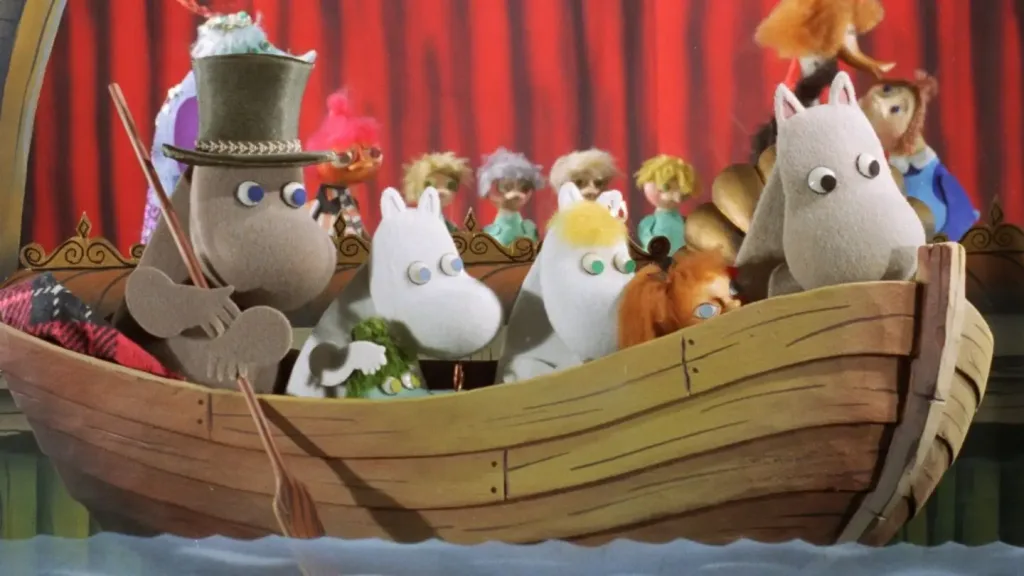
The Moomins are the central characters the series is named for, fairy tale creatures who live in their house in Moominvalley. Their little family has all sorts of adventures and meet all manner of interesting characters, and there is contained within their lives a most wonderful appreciation for all the complexities of life—wrapped up in the perfect form for a child to enjoy.
Recommendation
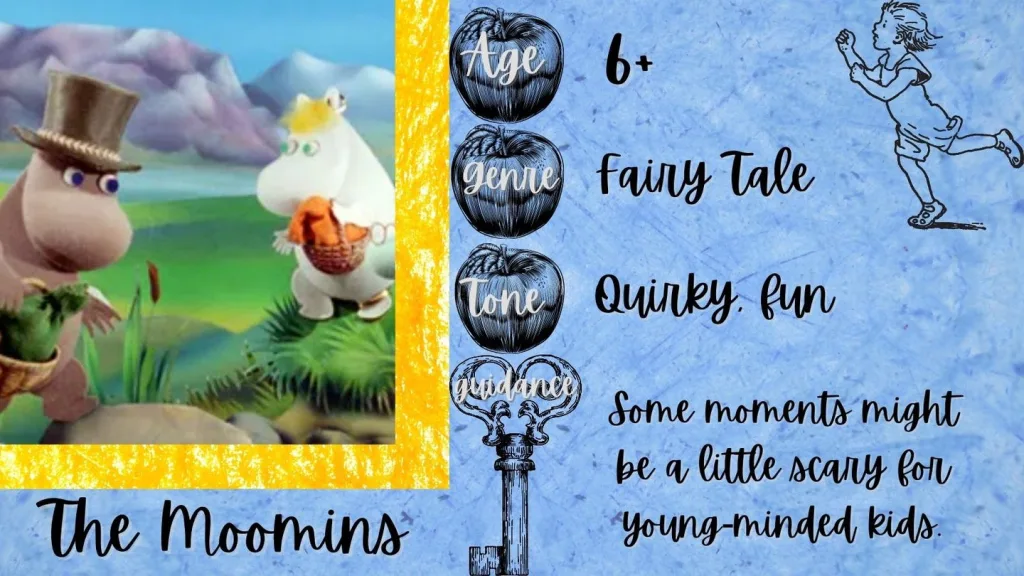
The Moomins has had a few television incarnations, but this is one of the best, with lots of great input directly from Tove Jansson who created the Moomins comics. The 1990s Japanese animated version is also wonderful, however, and can be shown to kids a year or two later when they start to have more exposure to fully animated works (it’s better to start kids off with stop-motion and other slow forms of animation first).
5 – Pogles’ Wood (1965)
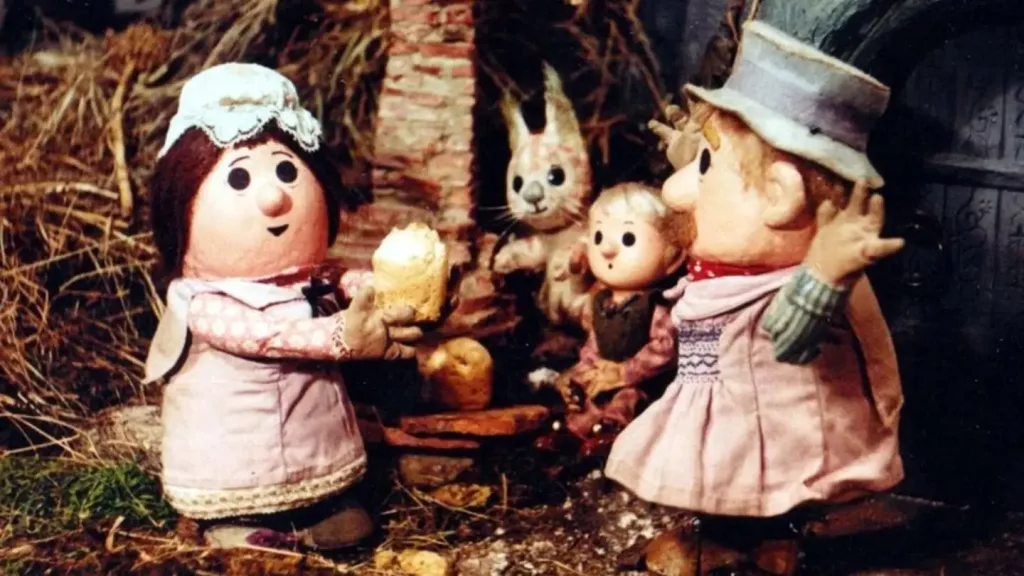
Pogles’ Wood offers the tale of the Pogles, tiny magical beings who live in hollow trees in the woods. The Pogles in this story are Mr. And Mrs. Pogle, their adopted son Pippin, and a squirrel-creature named Tog.
Recommendation
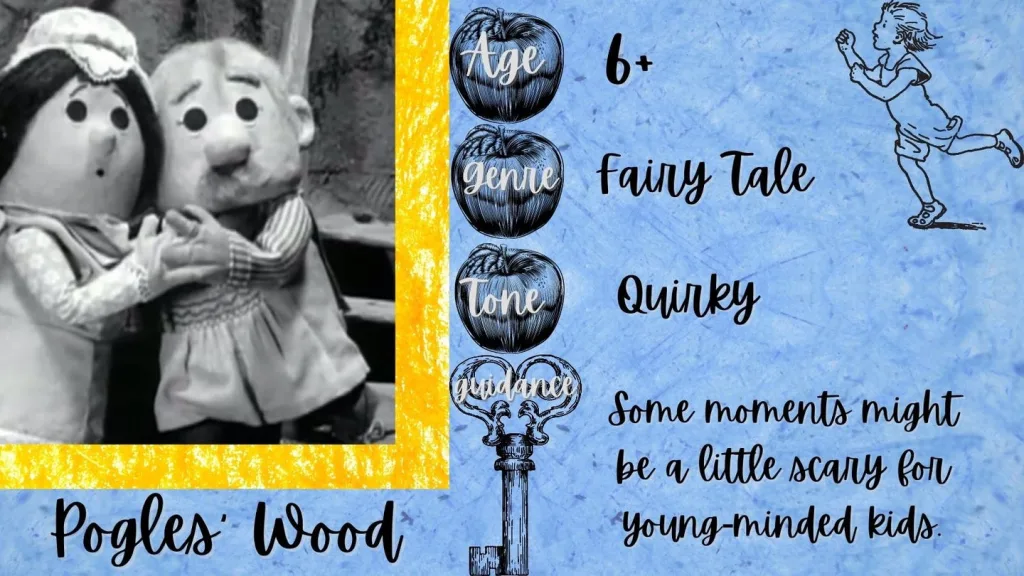
The original series, entitled Pogles’ Wood, has some themes that are a teensy bit on the darker side of fairy tale lore, and might be better appropriate for a child one or two years older. But, overall, this series is idyllic and ideal, with bold imagination and a sweet sensibility in how it blends the real-world with the world of the childhood fantastic.
6 – Bagpuss (1974)
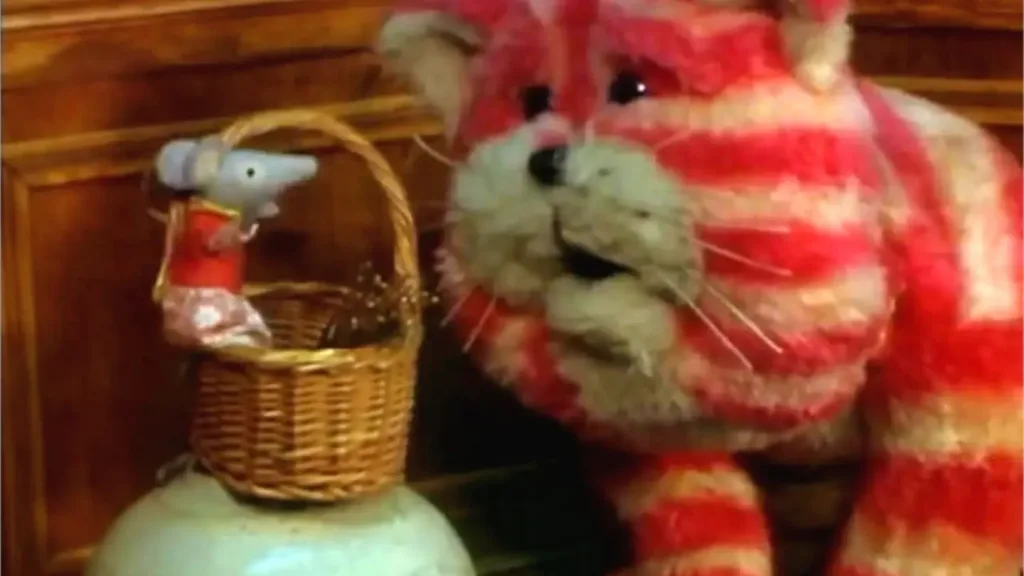
Bagpuss is another lovely stop-motion animation created by the same people who brought Noggin the Nog and The Pogles to life. It centers on a shop where nothing is sold, and the magical inhabitants who are all different toys that come to life when a little girl Emily speaks a special poem to Bagpuss, a cloth cat doll who she loves very much.
Recommendation
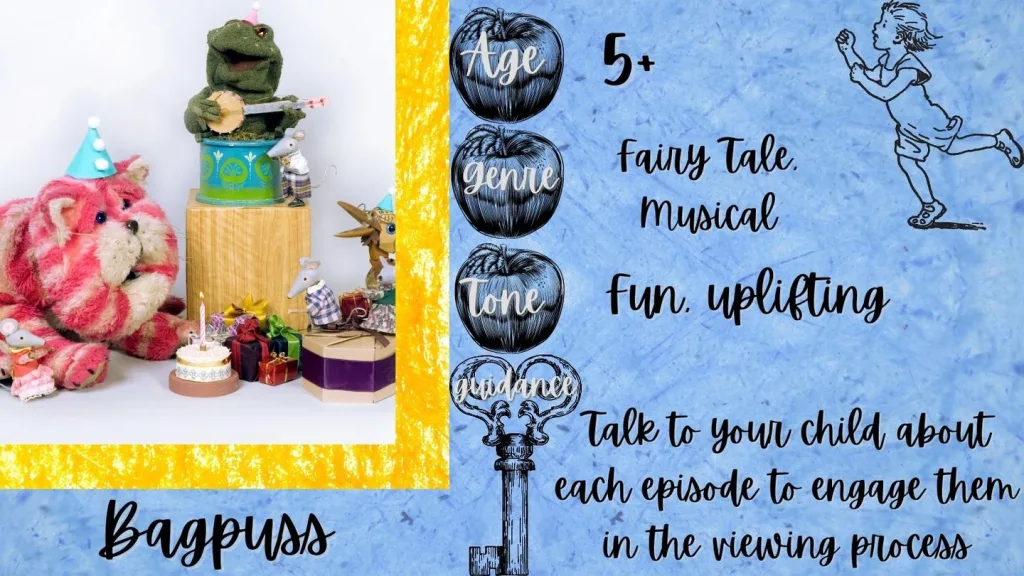
It’s got a great cast, a wonderful slow form of narration, and a divine series of heartwarming tales that center on things Emily brings into the shop in the hope of their finding their way back to their original owners.
7 – Camberwick Green (1966)
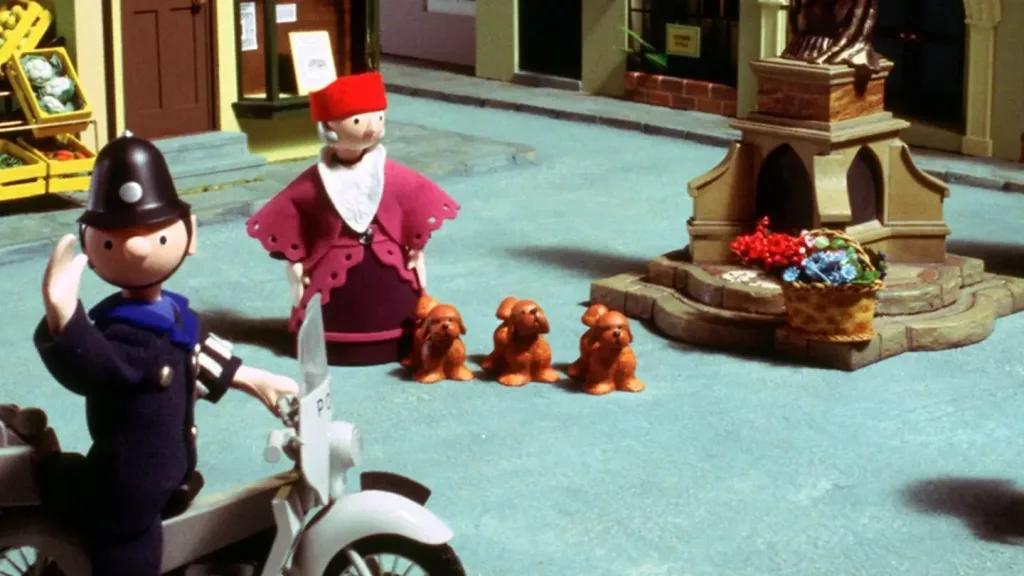
Camberwick Green is the small fictitious village where the series takes place. Each episode sees the villagers of Camberwick Green dealing with one or another domestic crisis (such as a water shortage or a swarm of bees) but, by the episode’s end, all the problems are worked out to the benefit of all.
Recommendation
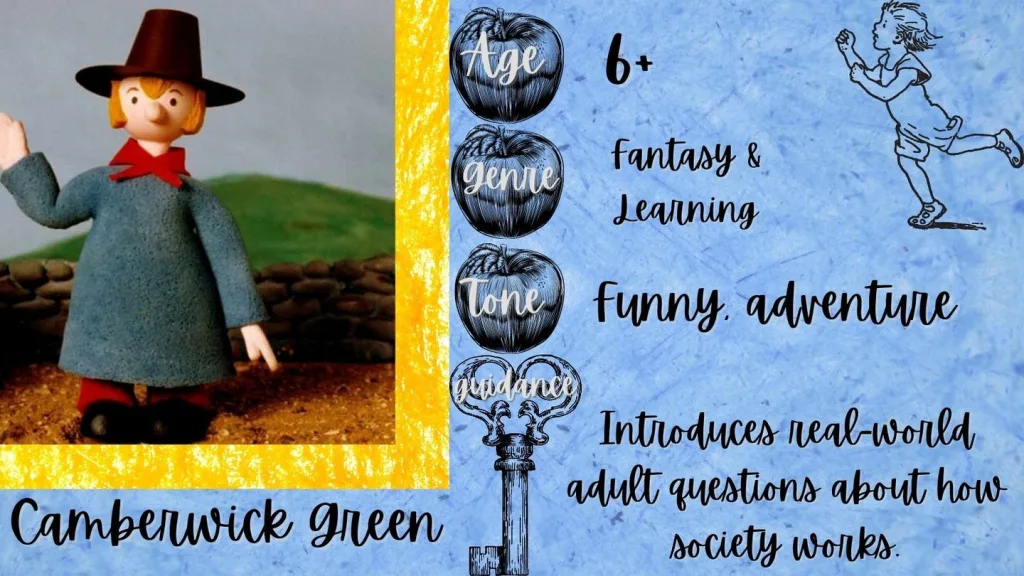
The whole series is done with brilliant stop-motion puppets, carefully guided through their plot by the gentle voice of the narrator who describes their adventures.
8 – The World Of Peter Rabbit & Friends (1992)
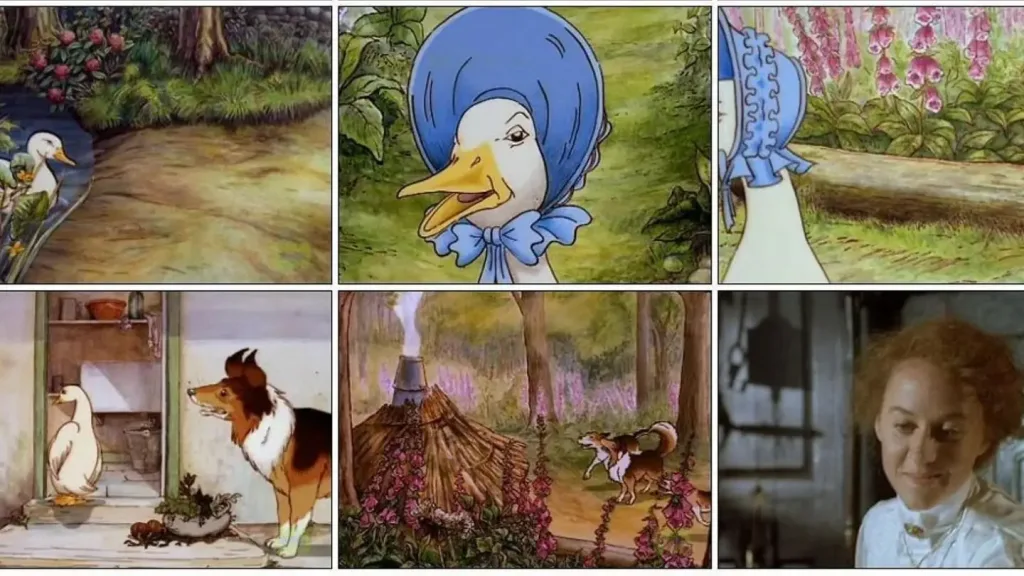
Possibly the best adaptation of Beatrix Potter’s famous tales, this version effortlessly melds reality with delightful simple animation. Each episode begins with Beatrix Potter (played by Niamh Cusack) painting in the woods or else doing her shopping in town. This live action sequence is always beautiful and shows her as she returns home to pen one of her famous stories. The stories themselves are then shown through animation. The score is of particular note with this one: hauntingly beautiful, it’s easily the best music for any adaptation of Beatrix Potter’s work.
Recommendation
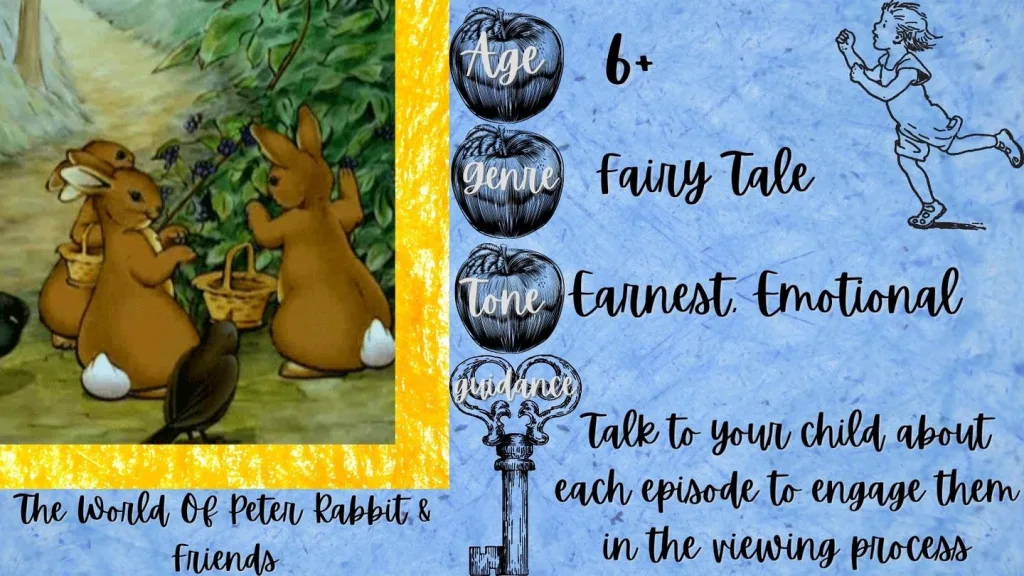
The World Of Peter Rabbit & Friends is my choice for kids for a number of reasons. It’s aesthetically meticulous, gorgeous in both photography, animation, and sound-design, and provides an immersive experience that encourages children’s love of nature. Dianne Jackson, director of the 1982 Christmas special The Snowman, was involved in the production, so if you’ve seen that (and who hasn’t!) you’ll instantly know that this series is something special.
9 – Wallace and Gromit (1989)
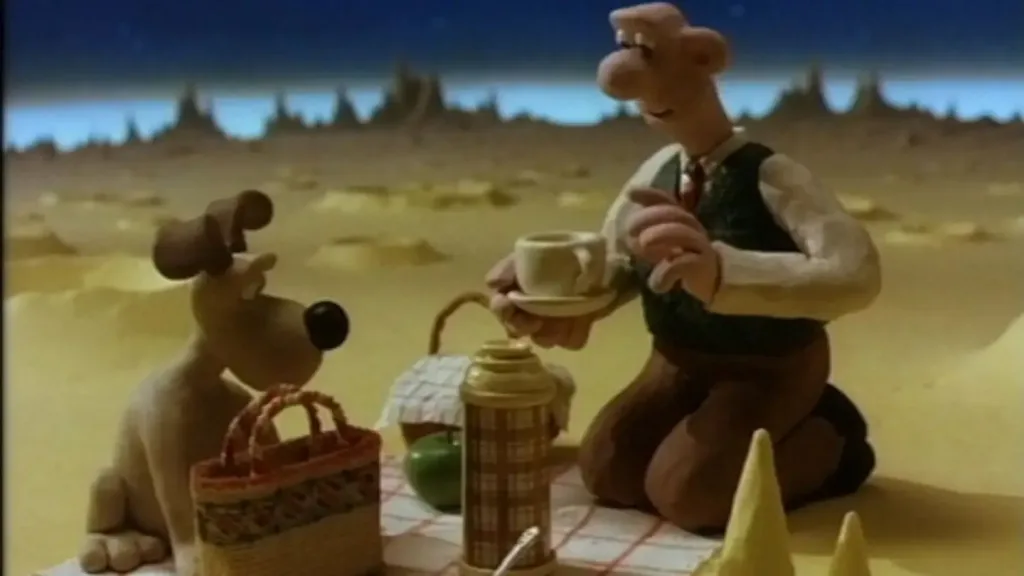
Wallace and Gromit is a claymation production featuring a man named Wallace, an inventor who loves cheese, and his more-intelligent dog companion, Gromit. Together, they get into all sorts of hijiinks and adventures, from their attempt to fly to the Moon (because it’s made of cheese), to discovering the source of the missing carrots at Halloween!
Recommendation
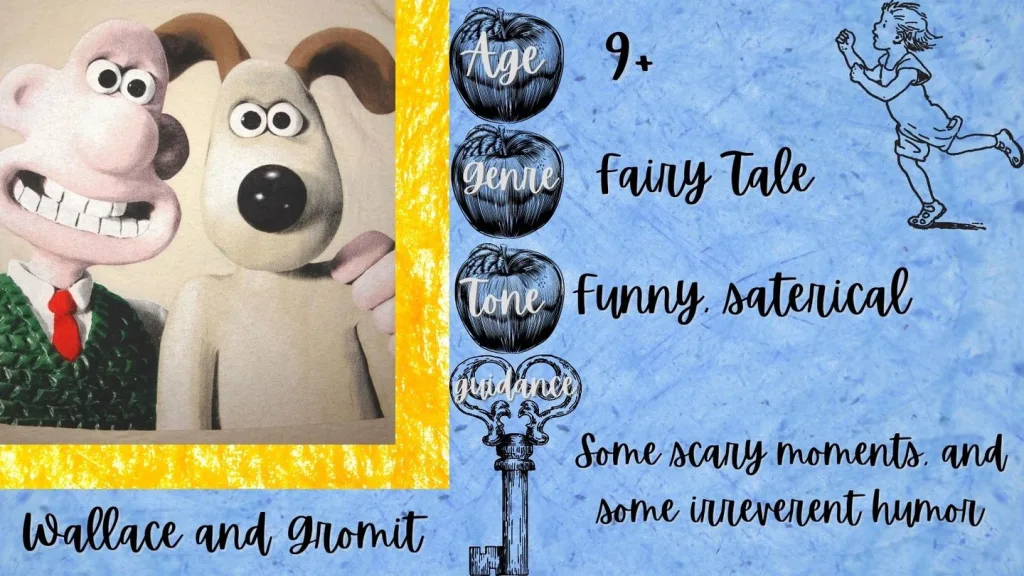
Since the whole series is made through stop-motion, the animation style has a uniquely tactile feeling to it. Some of the action in the series is a little faster, so it’s better for children who are a smidgen older and already have some media experience under their belt—likewise, a few episodes will be scary for kids who haven’t already encountered some media.
There are film shorts, feature films, and two television series of this excellent series!
10 – Reading Rainbow (1983)
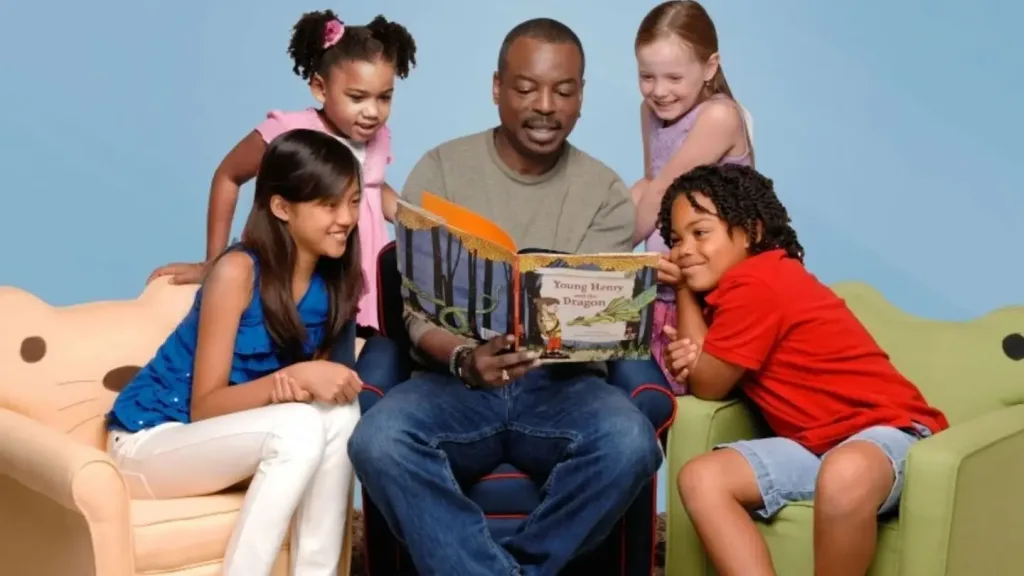
Reading Rainbow helped untold numbers of kids all over the United States, and often much farther, learn to love reading books. Hosted by the incomparable LeVar Burton, the series was a magical adventure into the topic from a children’s book, from history to hats!
Recommendation
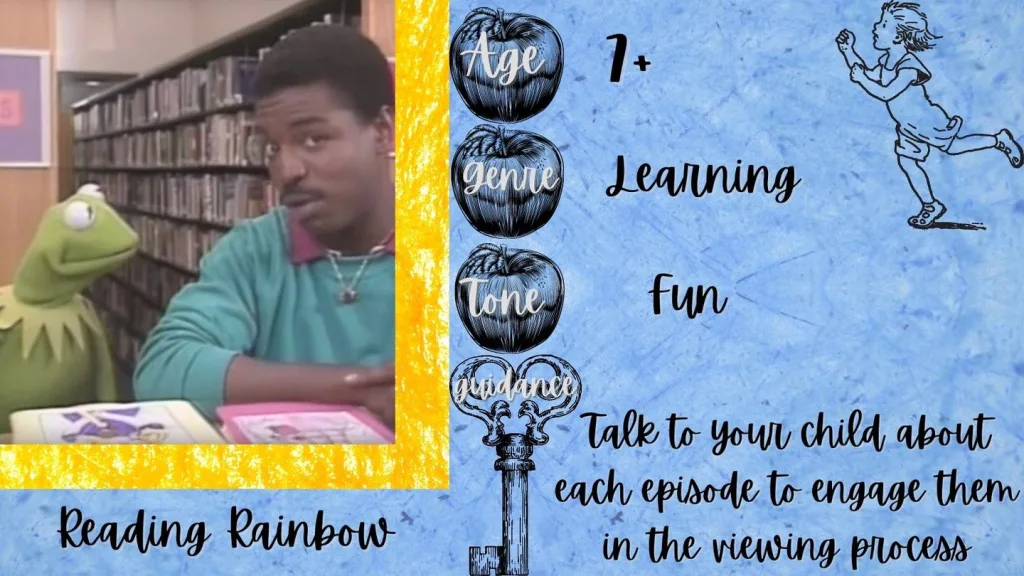
Considering how important it is for children to have early and wide access to good reading material, Reading Rainbow really is the ideal show for kids to watch.
11 – The Addams Family (1964)
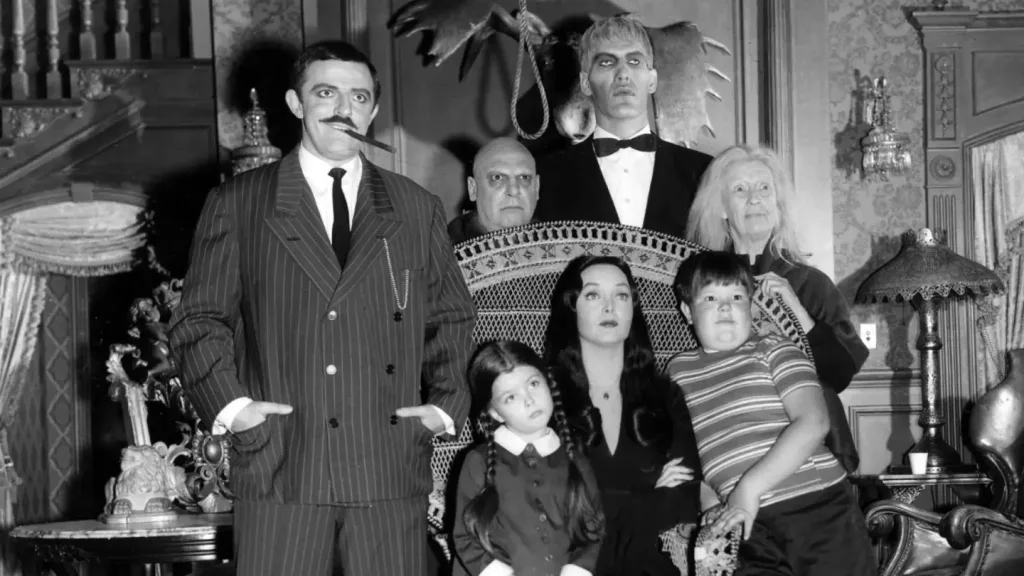
The Addams Family are happiest when it’s rainy and gray, when thunder and lightening kiss the sky, and when Halloween is near. Their delightful approach to the moribund condition of life is one of dynamic dualism: they are at once wealthy and yet eschew all value in money; they are fans of all things strange and dark yet show emotion freely and express their love for one another in little acts of kindness. In so many ways, the Addams family provides a staple vision of an accepting, open-minded, and relatively stable family system.
Recommendation
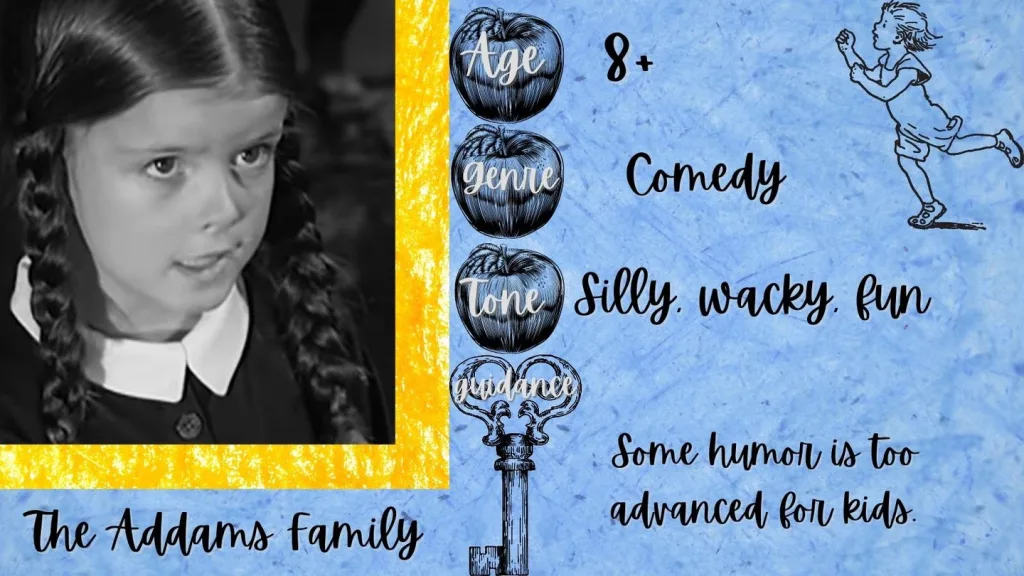
This version of The Addams Family really is the definitive version, though I also highly recommend the 1991 film The Addams Family as well as the 1993 Addams Family Values for children of around 12 years old. The classic 196os series, however, offers the best version of the Addamses for younger children, while remaining intimately enjoyable by adults. The best part about the series is how it portrays a loving family and a strong spousal relationship (especially rare in television from the era). The Addams Family also offers a subtle counter-culture thread that younger kids will benefit from: seeing a family that eschews conservative social values while simultaneously offering oddly healthy alternatives.
12 – The StoryTeller (1987)
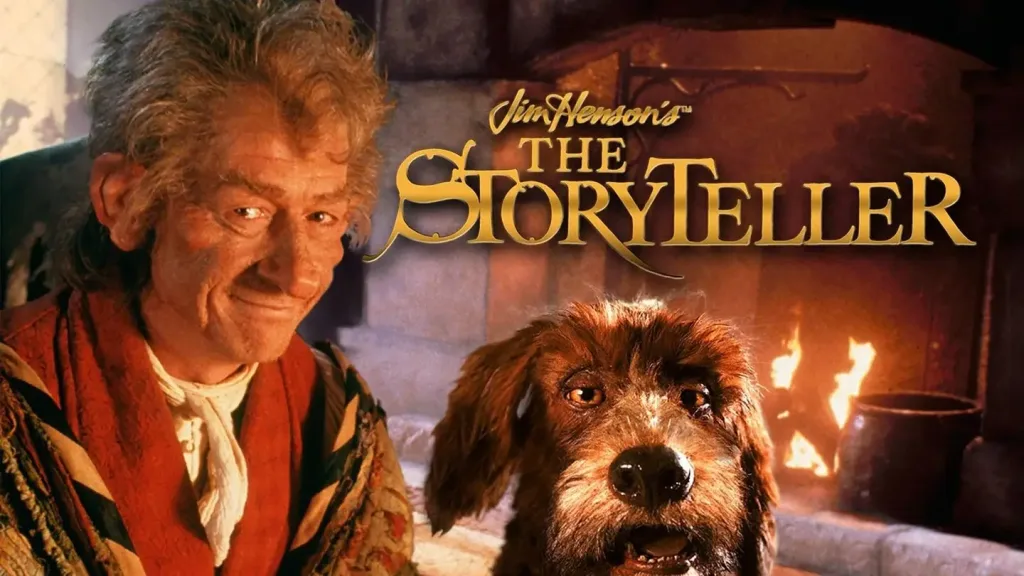
Fairy tales underpin every aspect of our culture at a primal level, and yet are so infrequently brought to life with the sort of care and reverence they require. Well, Jim Henson’s brilliant series remedies that, providing faithful, funny, dark, and brilliant adaptations of both classics and less
Recommendation
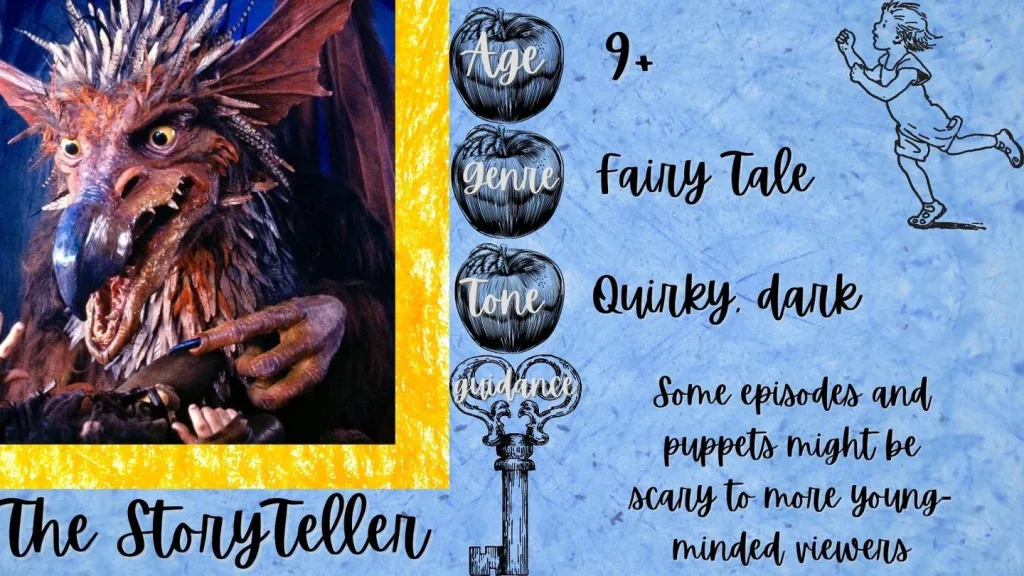
The StoryTeller might strike kids who have lots of previous media experience as a bit slow, but even so, it should capture their imaginations… if give time. For kids without much media experience, some of the portrayals of the fairy tales might be a teensy bit scary. I’d generally say that’s okay, however: the darker side of fairy tale myth is an important reason for the existence of fairy tales. Just make sure that your child gets a chance to talk about what they thought and felt after watching an episode.
Waldorf parents will know a bit about the 9-year change, the point where some of the harder aspects of growing up begin to emerge in children. This period of time is when kids start to want privacy, start to distance themselves from their parents, and start to wonder about things like “why do people die?” Fairy tales might seem a bit intense and dark, but that’s exactly what kids at this age need: because they are going through the first intense stage of their lives.
13 – The Magic Schoolbus (1994)
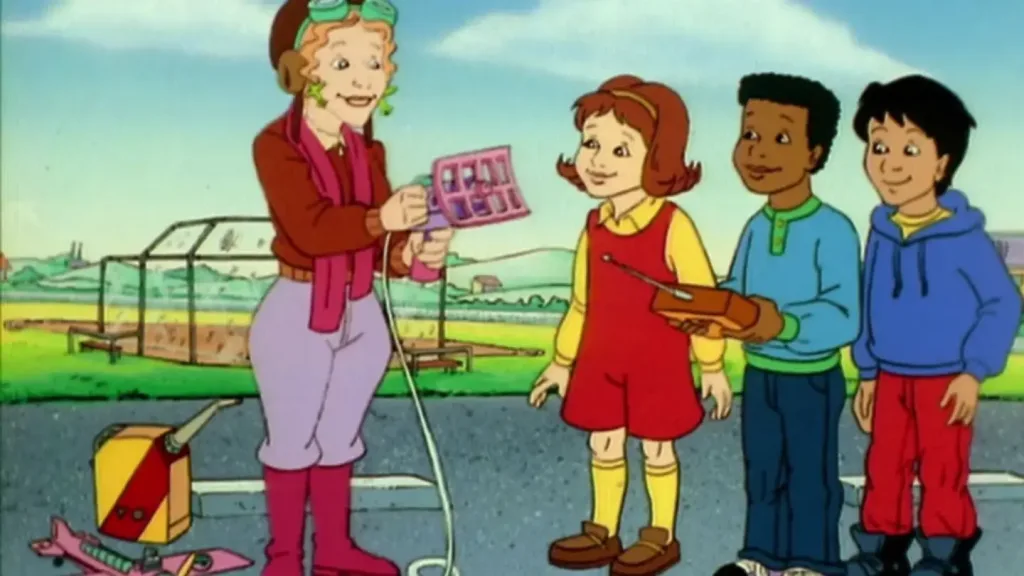
The Magic Schoolbus follows the magical adventures of Ms. Frizzle’s class, which takes field trips to all manner of locales—in all possible times! It focuses on science and social-emotional lessons.
Recommendation
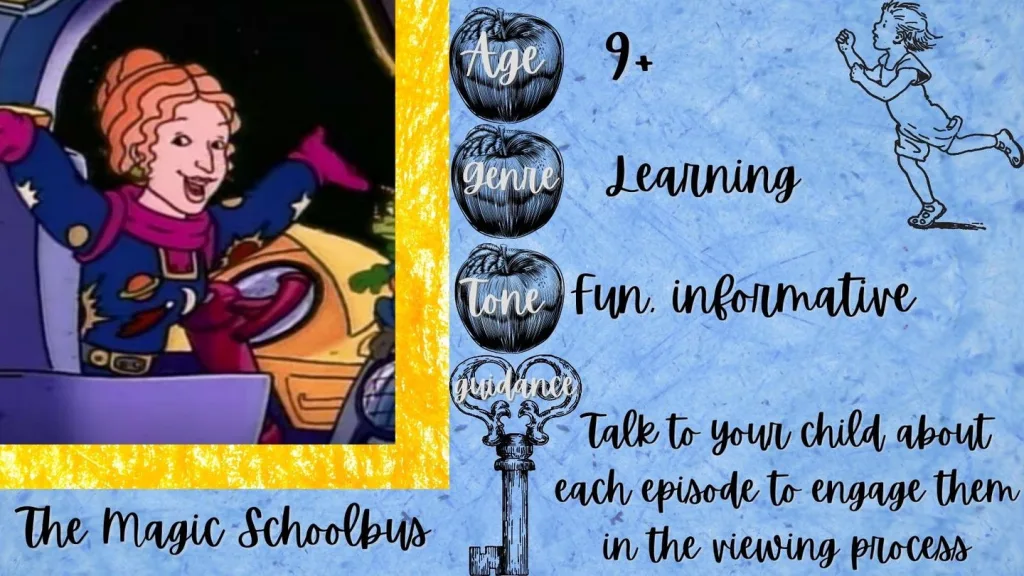
I specifically don’t recommend the newer series, The Magic School Bus Rides Again because it follows the modern mode of thinking regarding children’s shows: that faster, flashier, and more frenetic is likely to capture children’s attention. As always, I prefer shows which help children develop their imaginative capacities, which is aided by slower-form media!
The 1990s series has plenty of action, though, so kids will love it—but the tone as well as the quality of the hand-drawn animation are more conducive to a child’s imaginative interaction with the media.
14 – Doctor Who (1963)
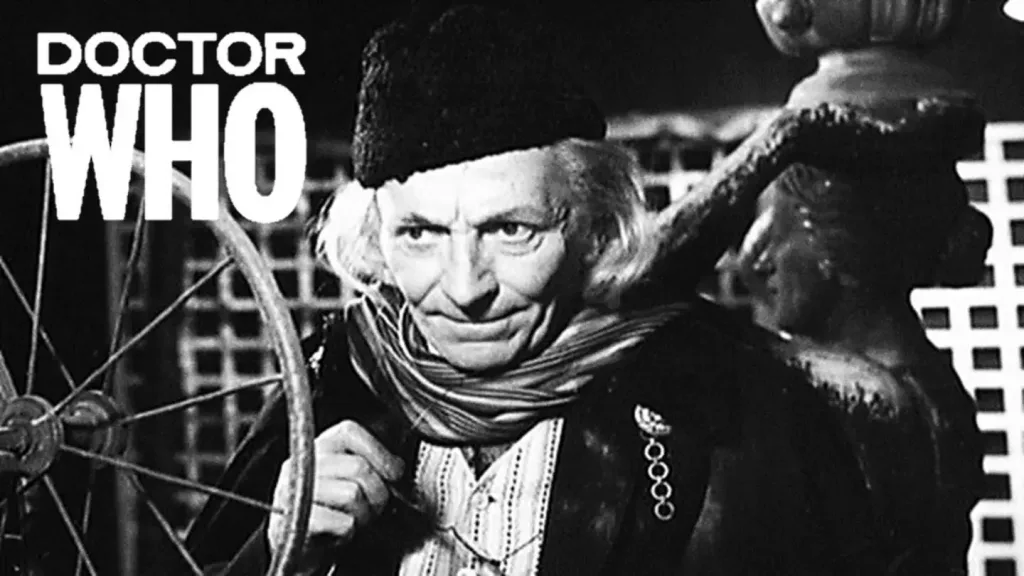
Doctor Who is one of the longest-running series in existence, with untold cultural impact on both the United Kingdom and the world-at-large. The tale of a “Time Lord” with a fondness for Earth who ends up traveling through time and space with various human companions, Doctor Who is a fantastic voyage to the limits of the imagination. The first two seasons, in black and white and with highly-staged environments, are ideal for kids who are just starting to explore new media forms.
Recommendation
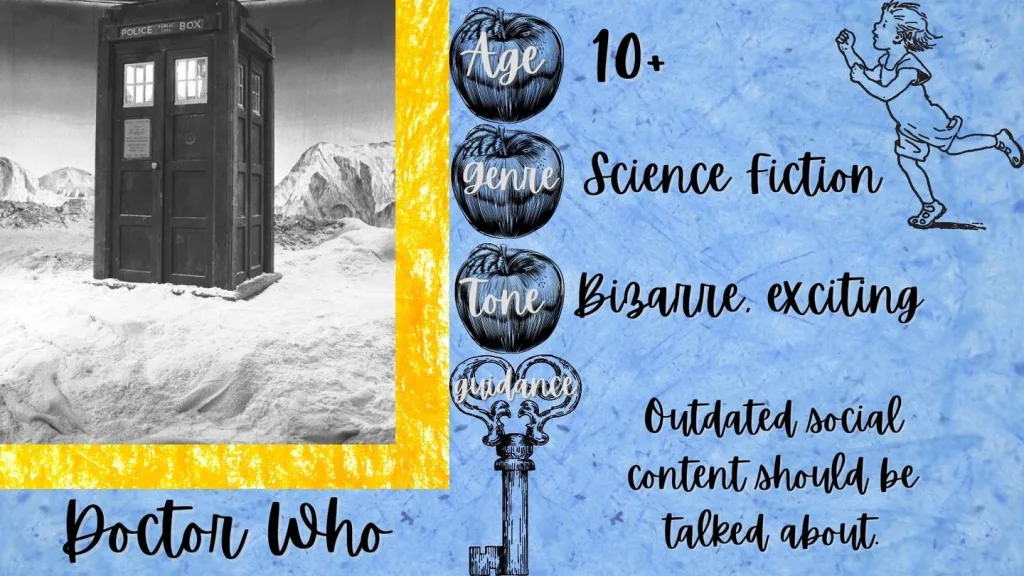
Doctor Who as a whole is not a something a kid should just sit down in front of to watch, but the first two seasons are excellent in terms of pace and style. I would suggest jumping from these early seasons straight to Tom Baker’s run as the Doctor in 1974. What I do not recommend is allowing kids to watch the newer shows, not until they’ve hit their early teens.
Parents should mainly be aware of the sexism that can emerge in these early series, which is incredibly casual. Likewise, the lack of minority representation is something to be aware of. The sexism, which can be particularly acute at times, is something parents should take special note to speak with their children about before, during, and after an episode.
15 – Star Trek: The Next Generation (1987)
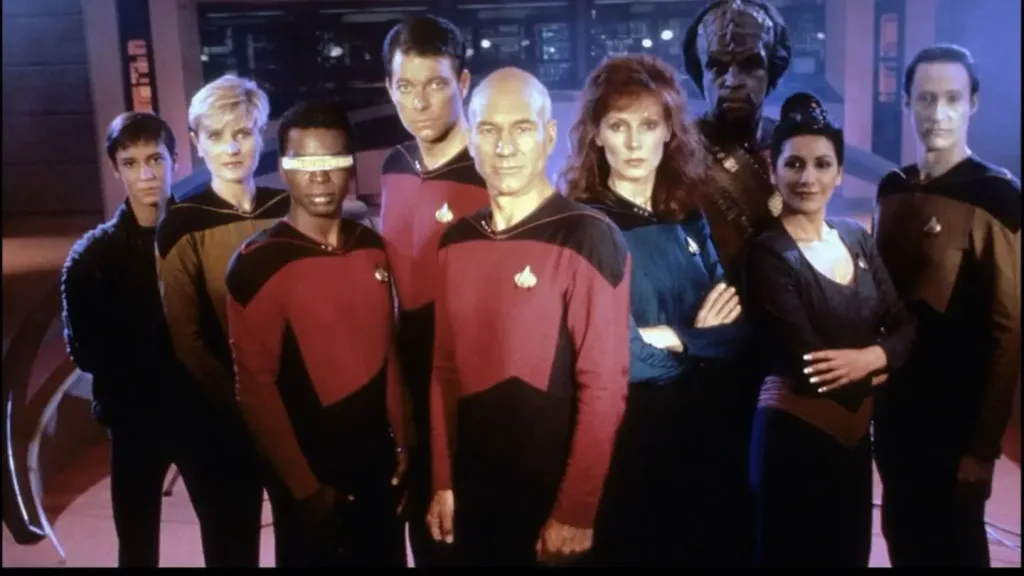
Star Trek is one of the best-known and most-loved franchises in the world, and for good reason. At its best, the series is a definitive attempt to imagine a healthy post-capitalist future, in which the driving force in people’s lives is not the acquisition of wealth but the betterment of self and the advancement of the species. The Next Generation is technically the 3rd incarnation of the franchise (with an animated series sitting between it and the original Star Trek). With a cast made of largely of classically trained stage actors, the pacing is frequently slow, the content is rich, and many episodes feature important ethical and philosophic content.
Recommendation
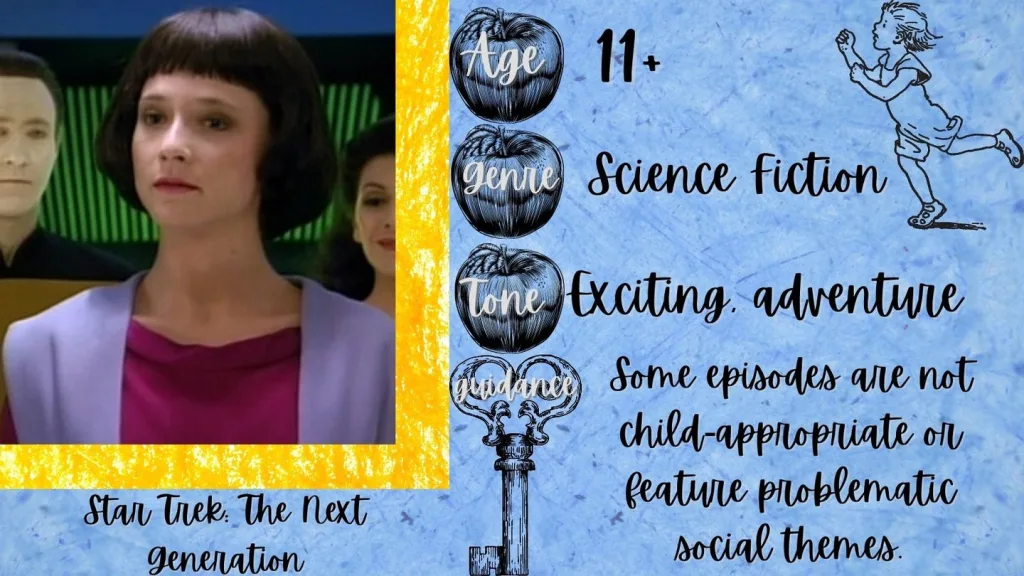
Star Trek: The Next Generation is the one to watch if you want to introduce a kid to Star Trek, but some episodes aren’t suitable for children for various reasons. A parent that is deeply concerned about what their child is exposed to will need to make a case-by-case basis on the episodes in a season, requiring a bit more work. Some sexual themes exist in the show, but few that are unreasonable for a 10 to 12-year-old; and some feature violence that kids might be influenced by too easily. (One of these days I’ll get around to writing a kids-viewing-order list!).
I strongly, strongly recommend not allowing children to view the modern versions of Star Trek. Enterprise, Deep Space Nine, and Voyager, are more suitable for a child of 13+. Discovery, and most definitely Lower Decks feature content I would categorize as 17+ (and I wouldn’t let even a teenager watch Lower Decks, honestly. It seems that all the newest Star Trek material is anything but “slow” and frequently features the sort of casual irreverence, violence, and sexualized humor that just isn’t a good influence on kids.
All that said: Star Trek is one of the most potent introductions to the sort of stories that provide a vital alternative to the negative social norms found throughout modern society.

